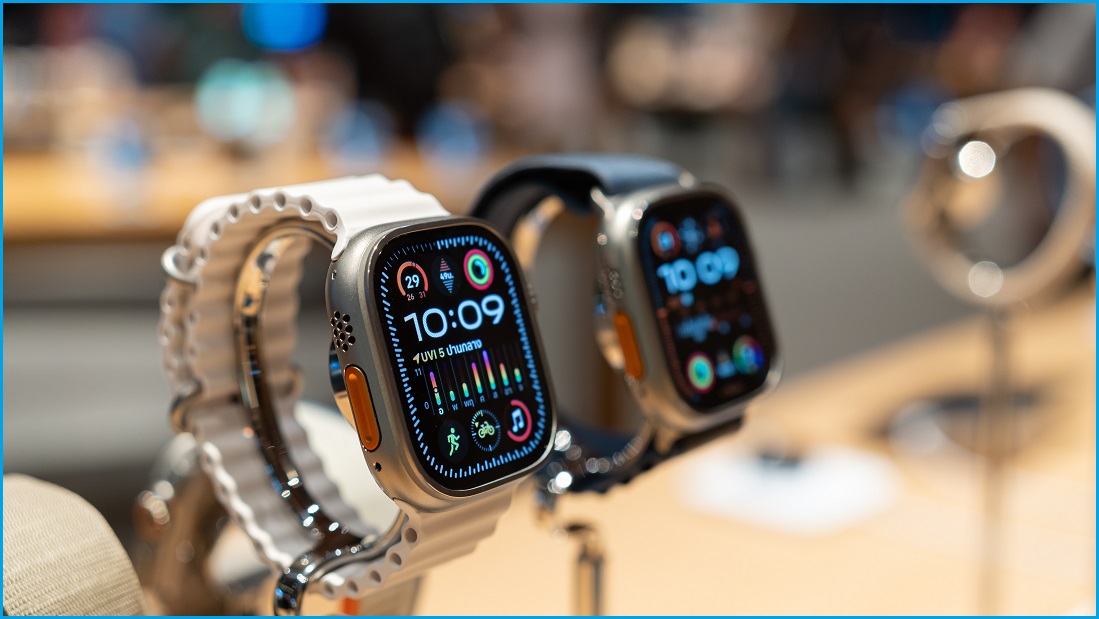Apple’s Watch 9 and Watch Ultra 2 could soon be blocked from sale in Australia, after Apple lost its appeal of a US government patent infringement ruling that has forced the company to stop selling the popular products.
The dispute arose from Apple’s inclusion of light-based pulse oximetry technology, which enables the devices to measure users’ blood oxygen concentrations using light pulses – an “interesting and surprisingly accurate” feature that Apple introduced in 2020, when COVID-19s impact on blood oxygen levels became widely discussed and researched in the early days of the pandemic.
The feature corresponded with a surge in sales of Apple Watches, which grew from 30.7 million units in 2019 to 43.1 million in 2020 – eventually reaching 53.9 million units in 2022, according to Statista – with estimates suggesting Apple Watch sales are worth $25 billion ($US17 billion) to Apple.
The technology that Apple uses for the feature was challenged in August 2021 by California companies Masimo Corporation and Cercacor Laboratories, which allege Apple’s oximeter had violated a number of their patents – an argument that was upheld by a judge in January this year, triggering a series of appeals on both sides of the dispute.
After two years of investigation, however, in October the US International Trade Commission (ITC) upheld Masimo’s claim, concluding that Apple had violated international trade laws by importing infringing products from its overseas factories – and issuing a limited exclusion order (LEO) and cease and desist order (CDO) that would bar Apple from selling the infringing products after 60 days.
That period expires on 25 December and, in the absence of a reprieve by the US president, the company is pulling the two products from sale in the US – with its engineers reportedly working feverishly to develop a non-infringing workaround while an appeal to the ITC decision, and several Apple countersuits against Masimo, progress.
The ruling “sends a powerful message that even the world’s largest company is not above the law,” Masimo founder, chairman, and CEO Joe Kiani said after the ITC handed down its decision, which he called “a strong validation of our efforts to hold Apple accountable for unlawfully misappropriating our patented technology.”
Could it happen in Australia?
For now, moves to pull the Apple Watch 9 and Watch Ultra 2 are limited to the US market, where the dramas around the Masimo’s patents are playing out.
Yet if Apple’s appeal fails, the ban could well extend to other countries where the companies have similar patents – including Australia, where Masimo has lodged multiple patent applications including one claim for protection of a “wearable device with physiological parameters monitoring”.
That application – which was lodged in Australia in January 2021 under a World Intellectual Property Organisation claim for protection in well over 100 countries – describes a “physiological parameters measurement sensor or module configured to be in contact with a wearer’s skin when the device is worn by the wearer on the wrist…. The sensor can include a convex curvature to improve pressure, and therefore optical coupling, between the wearer’s skin and the physiological parameter measurement sensor while balancing the pressure and the wearer’s comfort.”
The design of the Apple Watch uses a similar convex back, which was one of many issues explored in a US Federal Appeals Court decision and the ITU’s final determination.
Yet as Kiani argues that Apple can’t fix the problem with software updates alone – and demands concessions from Apple as part of any settlement – patent lawyer Paul Massey, engineering principal and ICT leader for Sydney-based intellectual property law firm Spruson and Ferguson, observed that “the engineering effort to make these modifications is a high-stakes undertaking for Apple.”
The company’s “unprecedented move… underscores the significance of the patent dispute and its potential impact on the company’s financial performance,” Massey noted while endeavouring to maintain a watching brief “to see how this high-profile conflict will shape the future of smartwatch technology and the related intellectual property rights.”










